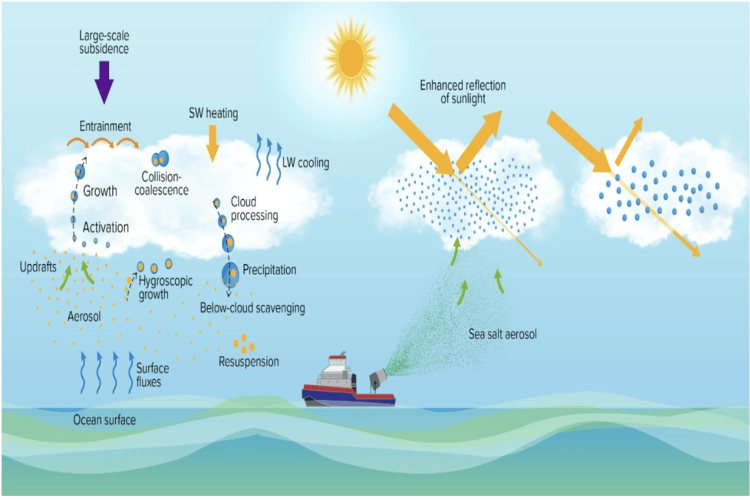
Study shows that traditional sulphur-burning ships have unintended side effect of cooling the planet through ship exhaust pollution
By
A study led by Pacific Northwest National Laboratory has found that ‘dirty’ ship emissions – usually releasing sulphur aerosols into the Earth’s atmosphere – actually help to produce a cooling effect on the planet, mitigating some of the global warming from greenhouse gases.
Although the magnitude of the cooling effect is not known, this new research suggests that a reduction in sulphur emissions – mandated by the International Maritime Organisation in 2020 to be reduced by 80 per cent across shipping globally – has improved coastal air quality but accelerated global warming. Sulphur was restricted by the IMO due to concerns over its adverse effects on respiratory and cardiovascular health.
Currently, there are almost 100,000 large ships within the global shipping industry that account for more than 90 per cent of international trade. Traditionally, ship exhaust pollution is caused by sulphur-containing fuels that increase background sulphur aerosol levels – droplets suspended in air. Once water vapour condenses on these aerosols, they can form clouds. Clouds polluted with sulphur are typically brighter than their clean counterparts, meaning more light can be reflected back into space and consequently reduce global warming.

Researchers used several models to estimate the change in aerosol induce-cooling resulting from the IMO2020 mandate. The study concluded that patterns in the models correlated strongly with satellite-observed changes in clouds, causing less light to be reflected back into space. The research also backed up existing evidence of the Northern Hemisphere’s increased surface temperatures between 2022–2023.
‘To what extent are we accelerating climate change by cleaning up air quality faster than limiting greenhouse gas emissions?’ said Dr Edward Gryspeerdt, an author of the study and Royal Society University Research Fellow at Imperial College London.
He said: ‘Our inability to provide a robust attribution of global radiative forcing and resulting temperature changes even three years after such a large experiment speaks to the huge challenges in managing any deliberate intervention due to natural variability.’
What does this mean for the future?
Crucially, these findings only account for part of the observed cloud changes – rising temperatures across the planet cannot solely be accounted for by the changes in shipping fuel regulations. Events including El Niño also contributed towards these cloud changes.
Methods such as marine cloud brightening – injecting salt spray into shallow marine clouds to brighten them and increase their ability to reflect sunlight – are being proposed as potential solutions to the increasing global temperatures. However, such methods ultimately do not tackle the root of the problem: human-caused greenhouse gas emissions.

‘The recent acceleration of impacts from global warming means that we need to consider non-ideal backup plans just to buy us enough time to reduce greenhouse gas emissions and existing burdens,’ said Lynn Russell, a climate scientist at the Scripps Institution of Oceanography at the University of California San Diego. ‘A research plan is essential before we can consider adopting MCB, and we need to simultaneously address the physical science questions and the human dimensions.’




